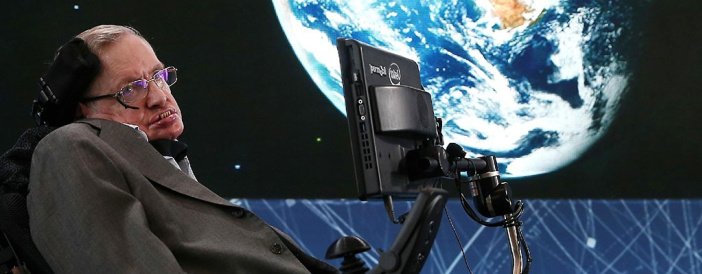
begin quote from:
Hawking joins $100M hunt for alien life
The initiative will rely on a fleet of postage stamp-sized spacecraft to explore the universe.Funded by Russian billionaire »
Stephen Hawking
and Russian billionaire Yuri Milner are teaming up in a $100 million
hunt for alien life that will rely on a fleet of postage stamp-sized
spacecraft to explore the universe.
Facebook CEO Mark Zuckerberg will also join Milner and Hawking on the board of Breakthrough Starshot, a philanthropic initiative to focus on space exploration and the search for life in the universe.
Astronomers believe an Earth-like planet could exist within the "habitable zones" of Alpha Centauri, the closest star system to Earth, located 25 trillion miles (or 4.37 light-years) away.
Stephen Hawking Gets an Upgrade: How the Physicist's New Speech Software Works
Rare Photos of Stephen Hawking Through the Years
The Conversation: Stephen and Lucy Hawking
Breakthrough Starshot hopes to launch thousands of the tiny, light-propelled spacecraft -- called nanocrafts -- with the goal of reaching the star system in twenty years.
Each nanocraft is designed to fly at twenty percent the speed of light, on a sail pushed by a light beam, making it over a thousand times faster than today’s fastest spacecraft. With conventional spacecraft technology, it would take 30,000 years to reach Alpha Centauri.
"Earth is a wonderful place, but it might not last forever," Hawking said in a statement. “Sooner or later, we must look to the stars. Breakthrough Starshot is a very exciting first step on that journey.”
Each nanocraft would carry cameras, photon thrusters, power supplies, navigation and communication equipment, and the newly engineered "lightsail," which would propel each probe. If a single nanocraft makes it to Alpha Centauri after a 20-year journey, it would take an additional four years to transmit that information back to Earth.
Pete Worden, former director of NASA AMES Research Center, will lead the program, along with a committee of world-class scientists and engineers, team officials said.
The program faces significant research and engineering challenges, and is expected to take a few years to complete. However, the proposed design has been created around technology that is either already available or likely to be attainable in the near future, according to the Breakthrough Starshot team.
Facebook CEO Mark Zuckerberg will also join Milner and Hawking on the board of Breakthrough Starshot, a philanthropic initiative to focus on space exploration and the search for life in the universe.
Astronomers believe an Earth-like planet could exist within the "habitable zones" of Alpha Centauri, the closest star system to Earth, located 25 trillion miles (or 4.37 light-years) away.
Stephen Hawking Gets an Upgrade: How the Physicist's New Speech Software Works
Rare Photos of Stephen Hawking Through the Years
The Conversation: Stephen and Lucy Hawking
Breakthrough Starshot hopes to launch thousands of the tiny, light-propelled spacecraft -- called nanocrafts -- with the goal of reaching the star system in twenty years.
Each nanocraft is designed to fly at twenty percent the speed of light, on a sail pushed by a light beam, making it over a thousand times faster than today’s fastest spacecraft. With conventional spacecraft technology, it would take 30,000 years to reach Alpha Centauri.
"Earth is a wonderful place, but it might not last forever," Hawking said in a statement. “Sooner or later, we must look to the stars. Breakthrough Starshot is a very exciting first step on that journey.”
Each nanocraft would carry cameras, photon thrusters, power supplies, navigation and communication equipment, and the newly engineered "lightsail," which would propel each probe. If a single nanocraft makes it to Alpha Centauri after a 20-year journey, it would take an additional four years to transmit that information back to Earth.
Pete Worden, former director of NASA AMES Research Center, will lead the program, along with a committee of world-class scientists and engineers, team officials said.
The program faces significant research and engineering challenges, and is expected to take a few years to complete. However, the proposed design has been created around technology that is either already available or likely to be attainable in the near future, according to the Breakthrough Starshot team.

No comments:
Post a Comment